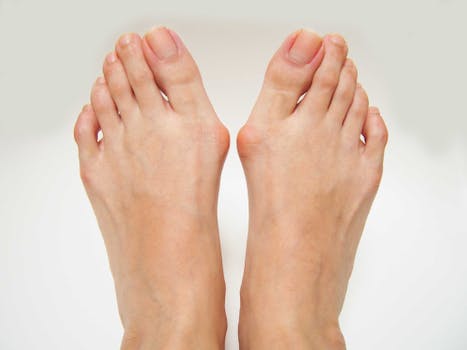Bunions

A common misconception is that a Bunion is a hard lump of skin that sits just behind your big toe, but "bunion" is a term that describes osteo-arthritic changes that have occurred in the 1st metatarso-phalangeal joint (MPJ). Bunions are genetic, but can be exacerbated by footwear. We see bunions frequently at Foot Right Podiatry and they vary in size and the level of discomfort. Suprisingly, it is often smaller bunions that are more painful than larger ones!
In the early stages of bunion growth, you may notice the big toe (Hallux) starting to move towards the second toe, and the joint may look a little larger than it was before. Usually at this stage, there is very little pain, and most people are only bothered by the change in appearance of their foot.
When the bunion develops further, the 1st MPJ becomes larger and the Hallux moves further towards the second toe, and may actually touch it. You may notice some discomfort in certain shoes - high heels or tight shoes in particular, and when exercising.
Advanced bunion growth leads to the dislocation of the 1st MPJ. The front of the foot becomes very wide and you will have difficulty fitting into regular footwear. Secondary issues include toe deformities as well as corn and callus growth.
Treatment options will vary depending on the size of the bunion and the pain you are experiencing. The earlier you seek treatment for your bunions, the greater the chance of success. Treatment can include mobilisation, muscle strengthening and retraining, footwear change, dry needling, toe spreaders and orthoses but will be dependent on your Podiatrist's findings during your biomechanical examination.